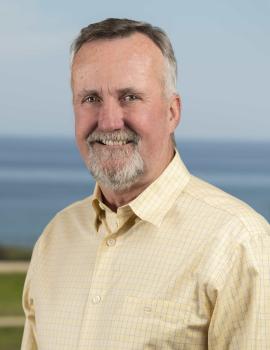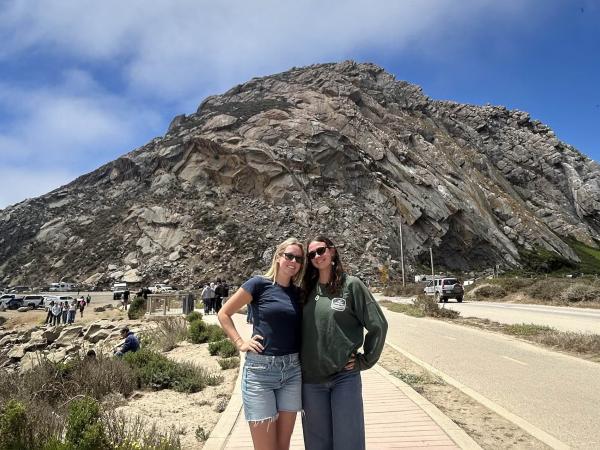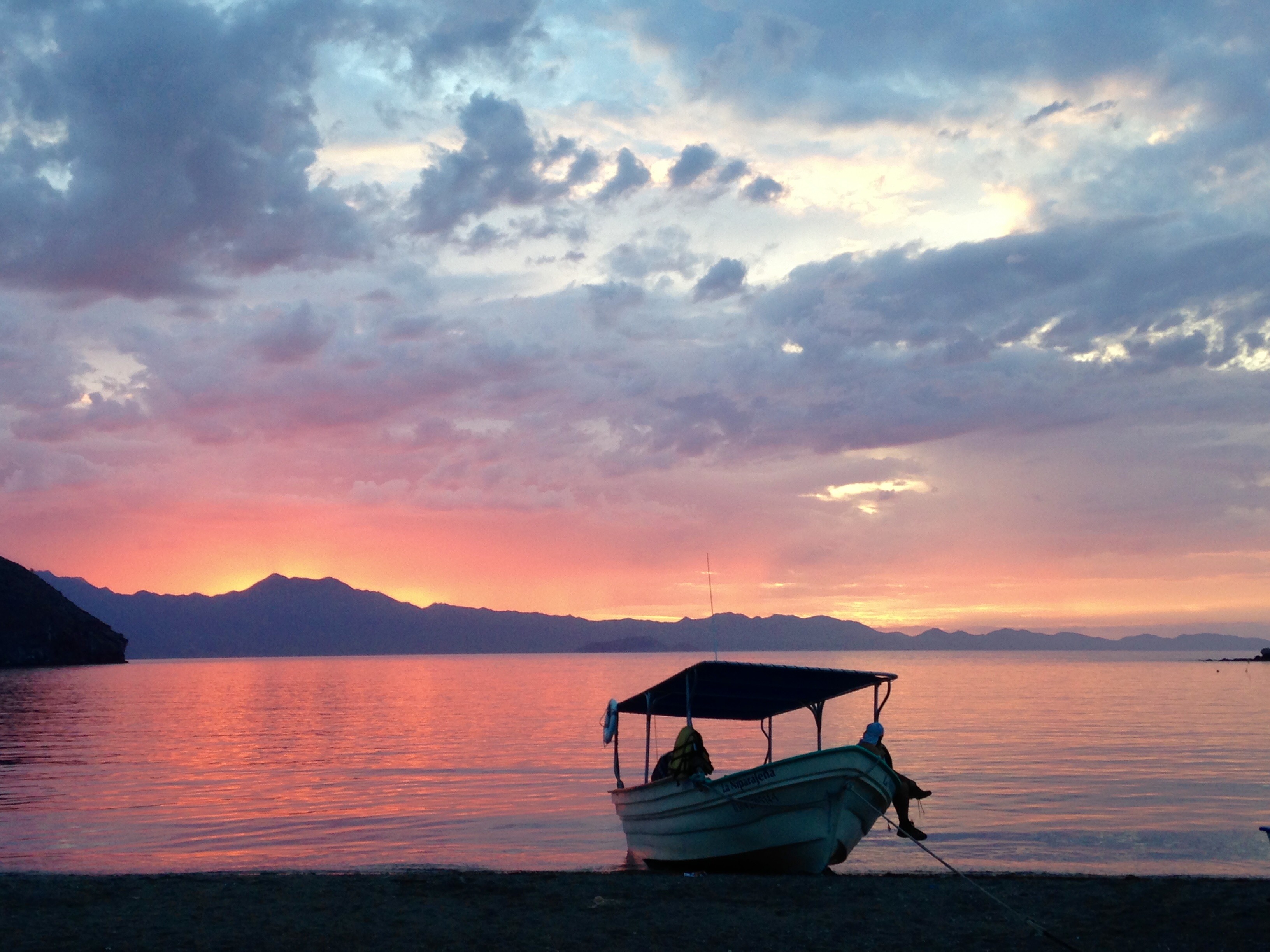
UCSB Bren School master's student Andrea Gracia Duran interviewed Dr. Anastasia Quintana, a postdoctoral researcher working with Steve Gaines, about her research in community-based approaches to encouraging small-scale fisheries compliance, ultimately contributing to the resiliency of coastal ecosystems and economies.
Please introduce yourself and your research.
My name is Anastasia Quintana, and I am a Postdoctoral Research Fellow at UC Santa Barbara, funded by the National Science Foundation. A great team of students and I are working on a project to understand how governance shapes compliance in small-scale fisheries. We are trying to understand if we see different types of compliance when top-down government institutions manage fisheries vs. when fishers manage their own fisheries. More broadly, my work tries to understand the factors that enable collective action and self-management in small-scale fisheries. In the places I work, as in many coastal communities, it’s not feasible to have technocratic top-down government management. These situations provide a very interesting kind of laboratory to study collective action, and allow for the approach used in the study we’re talking about today.
What inspired you to begin doing this type of research, and how did that eventually lead to your work in the Gulf of California, Mexico?
My dissertation was based on a case from the Gulf of California. My PhD advisor, Xavier Basurto, who has worked in the Gulf of California for 20+ years, brought me into a team of researchers, natural and social scientists, who had an interdisciplinary grant to understand the resilience of coastal ecosystems and small-scale fisheries in Baja California. As a social scientist, I was studying how one particular policy (“Zonas de Refugio Pesquero”, or fishing refugia) created the conditions where fishers could work together to manage their fisheries in a place where there had been no management before. My colleague and fellow co-author, Alfredo Giron Nava, who is an oceanographer and ecologist, was investigating if we could use sophisticated modeling approaches to understand the status of the fishery, and what the situation in the water was.
The funding of this project was intended to weave these two approaches together, and I think our study has been pretty successful at achieving an integrated social-ecological science. The heart of the paper uses a positive feedback loop to understand the system, and you can't understand it unless you have both of the social and ecological elements working together through time.
For someone that is not familiar with marine protected areas (MPAs) or fisheries in general, how would you describe them?
According to the UN, we’re now in the ocean decade (2021-2030), and the primary tool that’s used for ocean conservation is a marine protected area (MPA). MPAs currently cover about 7.6% of the ocean – roughly about 5 billion football fields. It’s a really broad concept, but you can think of them as lines drawn around areas of the ocean that limit certain activities, like fishing, tourism, or mining. MPAs particularly target fishing, which can create conflict between conservation and fisheries – and by fisheries I mean the fish, people who fish, and the whole system that supports that.
What’s the difference between MPAs and the adaptive area-based conservation tools you study?
The fishing refugia that I study are a type of area-based conservation tool, which is the broadest term. It’s been long known that if you protect certain areas from fishing, the fish will recuperate, which benefits the people who fish for a living. The fishing refugia are a particular kind of fishery closure that are collaboratively designed by the communities of fishers who they affect. There’s a rich history of using similar closures to bolster fisheries, like in many Pacific Islands for hundreds of years. On the other hand, “MPA'' is a loaded and contested label. As I said, MPAs are often in conflict with fisheries. Historically, MPAs have mostly been used for biodiversity conservation, not fisheries recuperation. Some people would say the fishing refugia are MPAs because they prohibit fishing, but others wouldn’t because their goal isn’t biodiversity conservation. It’s easiest to think of the fishing refugia as a particular type of MPA, where fishers are at the steering wheel.
This can be a win-win scenario where it’s good for fisheries and conservation, but there's mixed evidence about how well MPAs work as a tool for fisheries management. This topic is interesting because my dissertation research, and a lot of the work I've done in fishing communities, shows that the people who live in these communities don't always see biodiversity conservation and fisheries management as two opposing factors. They have a much more fluid vision of what it means to make a livelihood out of the ocean. Of course, people have mixed opinions. Some of the diehard fishers in these communities will never leave fishing, while others can see themselves doing fishing and tourism, and tourism might rely on conservation.
In theory, how do the fishing refugia work?
In this part of Mexico (the Corredor region of Baja California Sur), the whole process happened in collaboration with Niparajá, an NGO that facilitated and organized the space for fishers to meet, talk to government staff, and negotiate which areas to close.
The way that these tools work is that the fishers propose and decide which areas to close. The government then closes them to fishing for a certain amount of time. In this case, it was five years, and as part of the deal, the fishers agreed to voluntarily respect and comply with those areas. However, there's still people from outside that fish there because the protected area can't be physically seen on the water. So, the fishers themselves have taken the responsibility to monitor and enforce these areas in collaboration with an NGO and the government. For example, once a year there's a boat that takes a group of people in the water to dive and count the fish inside and outside these areas. The team includes fishers who have been trained to do this kind of monitoring, staff from government agencies, and scientists from the NGO.
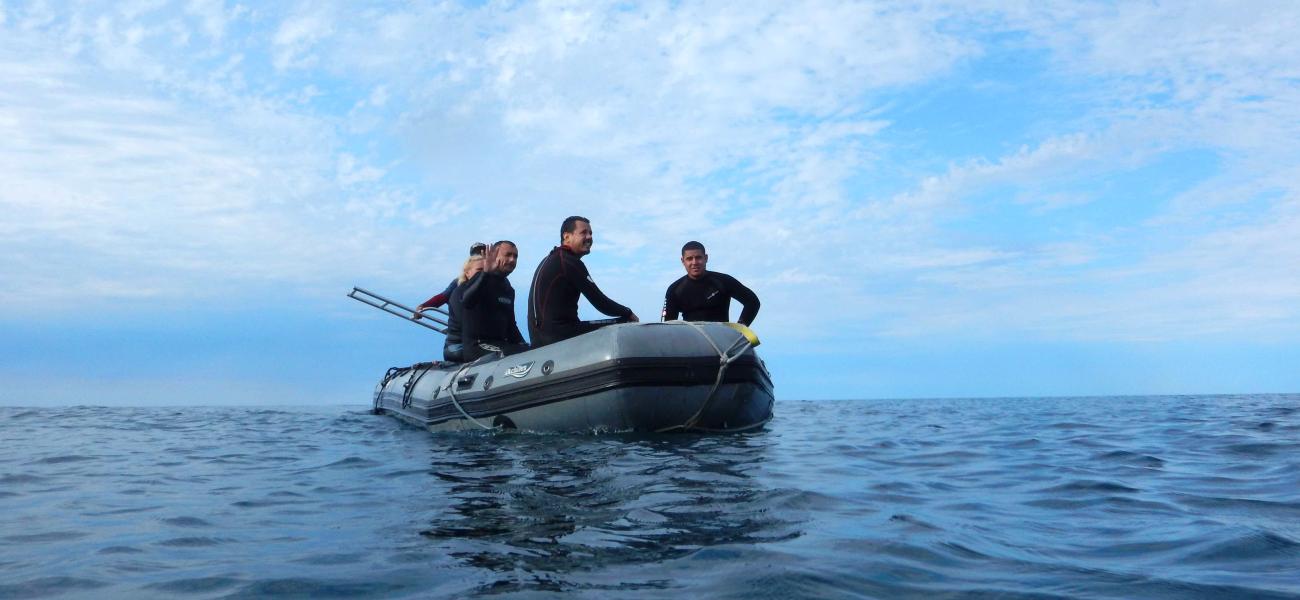
Pictured above: the "buzos monitores," a group of fishers trained to monitor the closures proposed to recuperate their fisheries.
I found that ,for the fishers, the most salient results discussed by the communities weren’t the statistical analyses done by the NGO. Instead, they discussed what the fishers saw in the water, and how they reported that back to their communities. These fishers, who have been trained to collect data, would dive and see the results firsthand, and then they'd go back to their communities and then tell them what they saw. When I interviewed fishers and other people in these communities to ask whether or not they thought these areas were working, the evidence they cited was the firsthand vision from the fishers, not the data.
Knowledge and data comes with politics. Although the scientists may perceive the data as objective, the fishers who go out to do collections observe when scientists miss things. They say some scientists don't count a certain species correctly because they don't know how to look under rocks. So, what seems like an objective process to the scientist, is actually critically evaluated by the fishers. The government, on the other hand, likes to see numbers and analyses that can support the proposals, so these various actors have different types of information that they see as valid. That is what has been part of the challenge, but also the opportunity in this collaboration.
In the town that held a lot of trust in the process, leaders helped facilitate a unified vision, but in communities that had overlapping fishing zones and no unified leader, they were unable to collect proposals to close large and good habitat areas.
What are other considerations in terms of the benefits and drawbacks of fishing refugia?
In deciding which areas to close to fishing, the fishers were faced with a dilemma. Typically, the best areas to close ecologically are also the best areas to fish. The areas that the fishers considered closing came from these ecological considerations, but the areas that they ultimately decided to close were ones that were socially acceptable to close due to equity considerations. Communities didn't want any particular fisher to be prejudiced against, so they were very intentional at using social metrics to identify which areas to close.
This brings us to the issue of trust. Niparajá sent a staff member to live in one of these communities for a year and a half to build relationships and trust with its members. When the NGO then approached the community to discuss closing some areas off to benefit their fishing long-term, that community was the most willing to trust this process and close a productive fishing ground – which was a big risk. This part of Mexico was the first place to establish this type of fishery closure, ever in history. It was uncertain how it would all end up because nobody knew if the government would approve the fishers’ proposal. There were so many uncertainties that the fishers were asked to deal with, so it required a lot of trust.
Communities with a lot of trust in the process closed larger areas. Communities with less trust in the process proposed smaller, and less productive areas. They basically gave up nothing, but ended up gaining nothing. This gets back to the positive feedback loop between trust and ecological benefits, mediated by a collective action process. In the town that held a lot of trust in the process, leaders helped facilitate a unified vision, but in communities that had overlapping fishing zones and no unified leader, they were unable to collect proposals to close large and good habitat areas. The only thing they could agree to was to close small, low-cost areas in terms of fishing that eventually provided little benefit.
What would you want stakeholders to take away from this? How will it help in terms of policy and management?
The key takeaway is that if we're trying to implement community-based protected areas, it starts with trust. Officials have to trust the fishers’ proposals, and fishers must have some level of confidence that they're not just going to give up their fishing areas for something that's not going to work – and there are many reasons it could not work. The government might fail to implement it, or other fishers might simply come in illegally from outside to fish. However, as we saw in this case, NGOs can play a major role in building trust.
Once you have community trust and buy-in, there are other pieces that are also essential. This is the challenge, but also the opportunity in a feedback loop: thinking about conservation in a dynamic way through time. It starts with trust, and then is mediated by collective action processes, including leadership. If the ecological design is good enough, success still depends on social processes like compliance. After an area is designed, social-ecological processes control whether this design leads to positive results in the water. Those results, in turn, are then either perceived or not perceived by the fishers. The key is always holding the fishers at the center since their opinion is what counts. If they don't perceive results in a way that's legitimate to them, then they won’t trust the process.
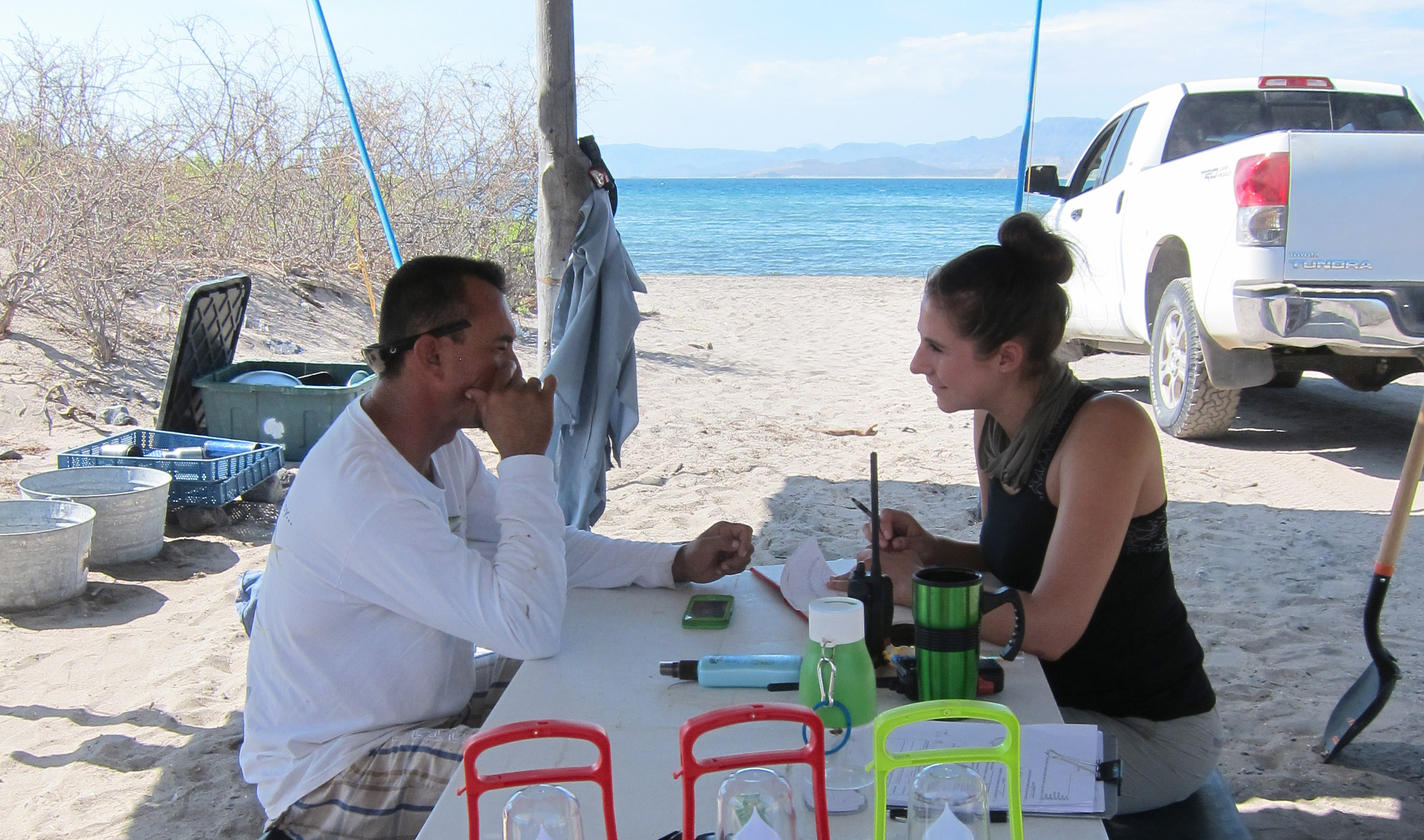
We can think of two scenarios that build over time. The first is growing trust, when fishers have enough trust to try something that's good enough to work. When that happens, they establish a good design and area, and if it works they have more trust in the process. This can be a learning process between fishers, government staff, and NGO partners. They build relationships by working together, and in that practice, the government can perceive the fishers as legitimate holders of knowledge and perhaps get more engaged in management. The other scenario is degrading trust. If fishers don’t trust the process of closing areas to fishing, or the areas they close lead to no benefits due to poor design or failure of enforcement, it all breaks down. In this alternative scenario, we'd see decreasing trust, shrinking areas, and worsening outcomes.
Our paper argues that these community-based tools can be really powerful when we think about them dynamically. However, they can also be a cautionary tale if not well implemented. This is a transformative way to think about conservation which puts fishers at the center of the process of marine protection, instead of trying to design optimal protected areas without input. Sometimes starting small and gaining trust can lead to better long-term conservation outcomes, rather than trying to start big, potentially eroding trust, and worsening outcomes in the long-term.
The paper mentions that this alternative model of no-take zone design is a means, rather than an end, of adaptive co-management. Could you expand on this a bit further?
We need to rethink conservation as a dynamic process of outcomes and indicators because what we care about is long-term sustainable livelihoods of coastal people with healthy ecosystems. My collaborators and I think in a way that's focusing on the means that builds trust, that thinks long-term, that lets people play with different tools and adapt their conservations to the constantly changing reality of social-ecological systems. There's climate change, there's changing social realities, populations, demographics, immigration, and other things that are constantly evolving. If conservation aims to be dynamic and adaptive, I think building trust and empowering fishers is more likely to achieve what we really care about, which is healthy, coastal ecosystems and healthy coastal fishers.
This collaboration came from a deep friendship that led to a long-term interdisciplinary collaboration. I think similar long-term friendships and collaborations are essential to get at these interdisciplinary problems.
For example, temporary protected areas have more potential to adapt to climate change compared to permanent areas – they can move when the water warms or they can change in response to seasonal variations. Having something that's flexible and dynamic can inform our decisions and change them as it goes. One of the ideas that we talked about in the paper is this concept of “biosphere stewards”. It’s this idea that the people who depend upon resources are actually the ones who are closest to the ground, and are most invested in the sustainability of that resource. They're most invested in keeping those coastal ecosystems healthy, and if we sustain those fishers through climate change and other stressors, that might make for a world with healthier ecosystems. I think we should all be thinking more about how we can support biosphere stewards to decide how to conserve their own environments.
Is there anything else that you’d like to add?
Yes! Just a special note to all the other early career scholars reading this: This collaboration came from a deep friendship that led to a long-term interdisciplinary collaboration. I think similar long-term friendships and collaborations are essential to get at these interdisciplinary problems. It's impossible to be an expert at everything, but to try to solve issues that are happening in the oceans, we need a comprehensive sphere of solutions.
Further reading:
Fisher participation in ecological monitoring of marine reserves, Biodiversity and Conservation, 04 Oct 2020
Fishing refugia and the transformation of the property rights regime, Conservation Science and Practice, 21 Sept 2020
Ecological and Institutional Diversity in small-scale fisheries project "MAREA"
